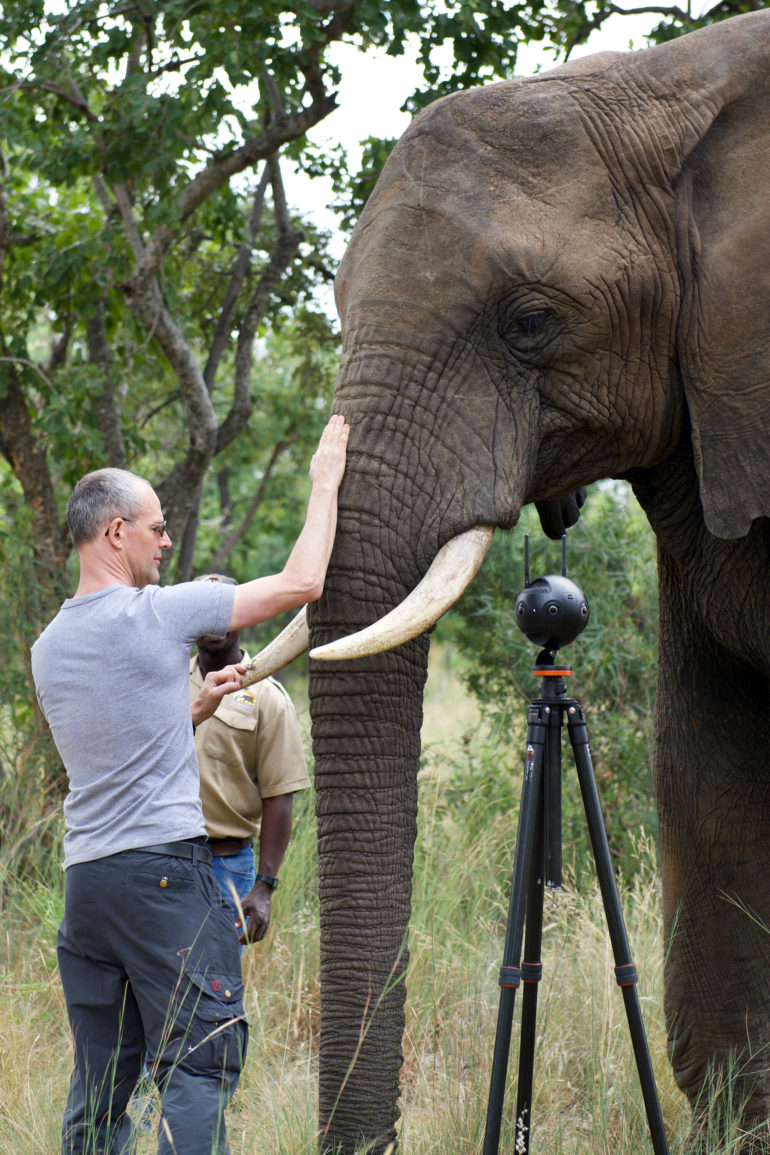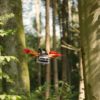The elephant proboscis (trunk) exhibits an extraordinary kinematic versatility as it can manipulate a single blade of grass but also carry loads up to 270 kilograms. Using motion-capture technologies developed for the movie industry, a team of scientists at the University of Geneva (UNIGE), Switzerland, demonstrates that the complex behaviors of the elephant trunk emerge from the combination of a finite set of basic movements such as the propagation of an inward curvature and the formation of pseudo-joints. In addition, the Swiss team demonstrates that the elephant trunk velocity obeys a mathematical law observed in human hand drawing movements. These results are published in the journal Current Biology.
Articulated bodies like the human skeleton are made of serial joints, restraining the number of possible movements they can accomplish. Conversely, the elephant trunk is flexible across its whole length: the coordinated contractions of the muscles result in twisting, bending, lengthening, shortening and stiffening, without any bone support. These changes in shape rely on the constant volume of the self-supporting tissues of the tube, allowing for a much greater variety of movements compared to articulated appendages. Hence, understanding how the elephant deals with this complexity and succeeds in controlling the motion of its trunk is a challenging problem. To investigate this question, a multidisciplinary team led by Michel Milinkovitch, Professor at the Department of Genetics and Evolution of the UNIGE Faculty of Science and Group Leader at the SIB Swiss Institute of Bioinformatics, combined behavioral and motion capture experiments with state-of-the art medical imaging.
From Gollum to the elephant trunk
First, the researchers placed reflective markers along the trunks of two adult African elephants and recorded with high accuracy their trajectories in 3D using multiple infrared cameras positioned around the scene. This technology is borrowed from the movie industry: Gollum in Lord of The Rings or Na’vis in Avatar were brought to life by transposing to digitally-created characters the movements of actors wearing motion-capture markers.The solution is to simplify
The Swiss team shows today that elephants use a fundamental simplification principle: sophisticated trunk trajectories are composed using a language of kinematic building blocks. Indeed, the researchers identified a tool kit of about 20 basic simple movements (the equivalent of our words) that are combined by the trunk to produce a specific complex behavior, similarly as a complex sentence is made of the combination of words. The elements that are selected and combined depend on the task the elephant performs. “When grasping and securing an object for transport, the trunk exhibits a localized flexion that travels from its tip to its most basal parts, while when the elephant reaches a target in front of it, it extends and retracts specific parts of its trunk in a modular fashion,” explains Paule Dagenais, a researcher in the Milinkovitch team. Varying the objects attributes induced transitions in the prehension strategies corresponding to different combinations of the 20 building blocks. For example, when grabbing a light wooden disk, the animal uses suction as a lifting force. On the other hand, suction is only used to secure the position of a heavier (metallic) disk while the trunk is wrapped around it to enforce gripping.
Virtual joints, a mysterious mathematical law, and biomimicry
When the target is placed more to the side, the reaching strategy of the elephants is very peculiar: the continuous proboscis forms rigid segments connected by virtual joints, momentarily giving the impression of an elbow and a wrist. “In addition, we discovered that how much the trunk slows down when following a curve can be predicted precisely on the basis of the local curvature of that path; remarkably, such a mathematical relation between speed and path curvature also exists for the human hand when drawing,” continues Michel Milinkovitch. Finally, using state-of-the-art computer tomographic (CT) scan, magnetic resonance imaging (MRI), and serial-sectioning, the Swiss team characterized the anatomy of the African and Asian elephant trunks in unprecedented details. By analyzing these anatomical data in the light of the behavioral and kinematic results, the researchers could draw a strong connection between the muscular system of the trunk and its biomechanical functions.
All these results will serve as the developmental basis of a new concept of soft robotic manipulation that would allow bio-inspired robots to detect, reach, grasp, manipulate and release a whole range of payloads and objects of various shapes and sizes.
How an elephant’s trunk manipulates air to eat and drink
More information:
Elephants evolved strategies reducing the biomechanical complexity of their trunk, Current Biology (2021). DOI: 10.1016/j.cub.2021.08.029
Provided by
University of Geneva
Citation:
How elephants evolved strategies that reduce the biomechanical complexity of their trunks (2021, August 23)
retrieved 23 August 2021
from https://phys.org/news/2021-08-elephants-evolved-strategies-biomechanical-complexity.html
This document is subject to copyright. Apart from any fair dealing for the purpose of private study or research, no
part may be reproduced without the written permission. The content is provided for information purposes only.



